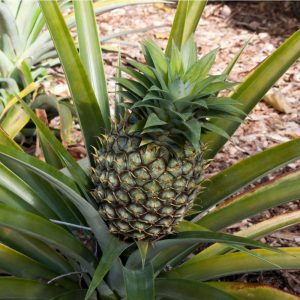Description
V. hieroglyphica – This epiphytic bromeliad from Eastern Brazil grows 3’ feet tall and 32-40” wide. It forms funnel shaped rosettes of arching, strap shaped, minutely scaly, yellowish green leaves, 20-32” long, marked dark green above, purplish brown beneath, dark brown sheaths are up to 4” long. In summer, bears greenish yellow floral bracts and tubular-trumpet-shaped, sulfur yellow flowers, to 2 ½” long, in branching, spike like racemes or panicles, to 32” long.
Zones 13-15
Vriesea –
There are about 250 rosette forming, evergreen, mostly epiphytic perennials (Bromeliads), closely related to Tillandsia in this genus. They naturally occur in forested and rocky areas, at altitudes of 8,000’ feet high in Mexico, Central America, the West Indies and South America. The mostly lance to linear leaves have smooth edges, are often finely scaly, and frequently have colored cross bands and other markings. Bract-like sheaths, sometimes colorful, are present at the leaf bases. The short stalked flowers are variously shaped, with petals free or fused into a tube, often shorter than the sepals, each petal with 2 scales at the base on the inner surface, the flowers are usually borne in flattened, 2 ranked, spike like racemes or panicles, with prominent floral bracts, produced on more or less erect scapes from the centers of the rosettes, in summer or autumn and can be red, orange, or yellow. Where temperature falls below 59 degrees Fahrenheit, grow in a warm greenhouse or as a houseplant.
Under glass, grow attached to pieces of bark or tree branches, or in containers of standard epiphytic bromeliad potting mix, in moderate light. During the growing season, keep the rosette centers filled with water, mist daily, and apply quarter strength foliar fertilizer every 4-5 weeks. Keep just moist in winter.
Prone to scale insects, mealybugs, leaf spots caused by drying and crown rot.



